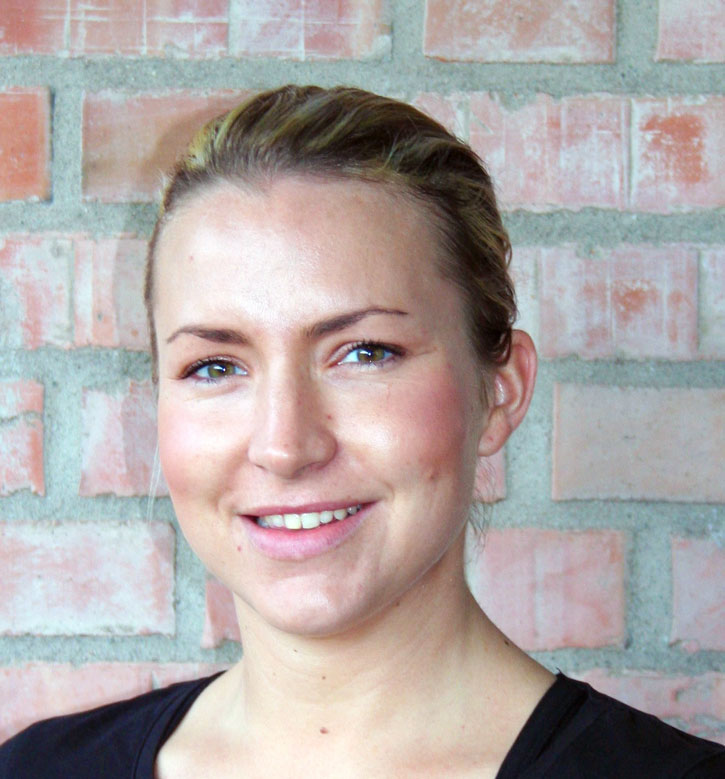
This is the conclusion reached in a doctoral thesis conducted at the Norwegian School of Sport Sciences and the University of Agder, in which Ingirid Geirsdatter Heald Kjære wanted
- to find out about physical fitness and obesity in ordinary people
- to see how “distance training” works for people: to what extent is it possible to use the phone and e-mail to encourage people to do more exercise
- and thus help them to become fitter
- and to also lose weight, reduce their waistlines and reduce their percentage of body fat?
In her thesis she obtained and presented figures which indicate that a lot more people are overweight than previously thought. She therefore wanted to find more objective goals for being overweight and obesity than the usual goals: BMI. Keywords: skin-fold measurements and waist circumference:
FACTS
- BMI or Body Mass Index indicate the ratio between height and weight.
- A special technique is used for skin-fold measurements in order to “pinch out” a fold of skin on the stomach and then measure the amount of subcutaneous fat.
- Waist circumference - waistline - is calculated by the amount of fat around the stomach.
Effective distance training
We will come back to the 900 or so people who were asked about their fitness and weight, which were both measured. Firstly we will take a look the almost 100 people who participated in the “distance” study: those who had exercised by e-mail and phone. The results were much better than anticipated.
Most of those who received such follow-up achieved increased fitness and lost weight, as summed up by Ms Kjær:
- There was a drop in their waist circumferences and fat percentages. 64% had “clinically significant” - at least 5% - less body fat (in the control group, which did not receive any follow-up, 36% experienced a reduction)
- They became fitter
- They became stronger, especially in their backs
- They became more supple (acquired better flexibility)
The greatest progress was achieved in respect of their oxygen intake, static back strength, suppleness and how much they could stretch their hamstrings (the muscles behind the thighs).
—On average the progress achieved was definitely greater in the main group, the so-called intervention group, than in the control group when we took into consideration the starting point for each group.
The main or intervention group received regular follow-up, while the comparison group, the control group, was left to its own devices. There were the same number of people in each group right from the start; around 40 in the main group completed the study, while 50 in the control group continued until the end.
An e-mail or phone call...
The main group was followed up by providing advice by e-mail or phone once every second week. The advisers switched between using e-mail and phone calls. All the participants followed the advice they received, even though it was not possible to control in detail how they actually followed the advice.
The special thing was how well it worked when we followed them up “from a distance”, says Ms Kjær.
The progress of the just under 40 participants who completed the study was definitely better than that of the 50 participants in the control group.
—Is the time now right to make greater use of distance training?
—It is worth investigating it more! she laughs, and says that it appears to be promising.
—It’s dependent on many different factors. People are different, and different things work for different people. For many people it is also important to receive support from others, while others can happily exercise on their own. This type of exercise will almost certainly work well for some people, but not for everyone.
The 111 participants who embarked on the study were randomly divided into one main group and one control group. 50 and 39 respective participants in each group completed the study. Everyone in both the main and control groups was tested in the same way, both before and afterwards.
Unlike the main group, the control group received no follow-up and no advice before the end of the study.
More obese people?
In addition to distance training, Ms Kjær also addressed obesity in her thesis, thus examining 900 others. Or, to put it more succinctly: they were examined in conjunction with the KAN project, in which Ms Kjær also participated. And she used these figures to investigate how many of the participants were overweight and obese.
She also developed normative values for musculoskeletal and neuromotor fitness - such as their endurance, static and dynamic strength, balance, movement ability and suppleness.
It would appear that the number of those who were overweight or obese was entirely dependent on the measuring method used: BMI, skin-fold measurement or waist circumference:
- Using BMI, around 12 % of all the men and around 13 % of the women were “obese” (BMI above 30).
- Using waist circumference, the figures were 24 % and 38 %, i.e. well over twice as many obese.
- Using skin-fold measurement, the respective figures for men and women were 37 % and 20 %.
- The most important thing in this respect was to calculate the percentage of overweight and obese people in the population. And it appears that none of the techniques used provided any clear answers, emphasises Ms Kjær.
- Consequently we should use more methods for determining the percentage of overweight/obese people in the population.
